Historical Significance of Basilica Minore del Santo Nino
Embracing a fusion of architectural styles, the Basilica Minore del Santo Niño captivates visitors with its striking façade adorned with intricate carvings and vibrant hues. Within its sacred walls, echoes of history and faith reverberate, inviting pilgrims and travelers alike to experience its profound spiritual aura.
Located in Cebu City, Philippines, is a remarkable testament to the enduring faith and cultural heritage of the Filipino people. Constructed in the 16th century by Spanish explorers, it stands as the oldest Roman Catholic church in the Philippines, making it a cornerstone of the country’s religious history. The basilica holds profound significance for both devout Catholics and visitors alike, serving as a symbol of spiritual devotion and national identity.
The church houses the image of the Sto. Nino, the city’s patron that represents Jesus as the Holy Child. It is also a place for prayer and pilgrimage with thousands of devotees visiting each year to offer prayers and seek blessings from the Santo Niño. Pilgrims often participate in novenas, Masses, and other religious activities as part of their spiritual journey to the basilica.
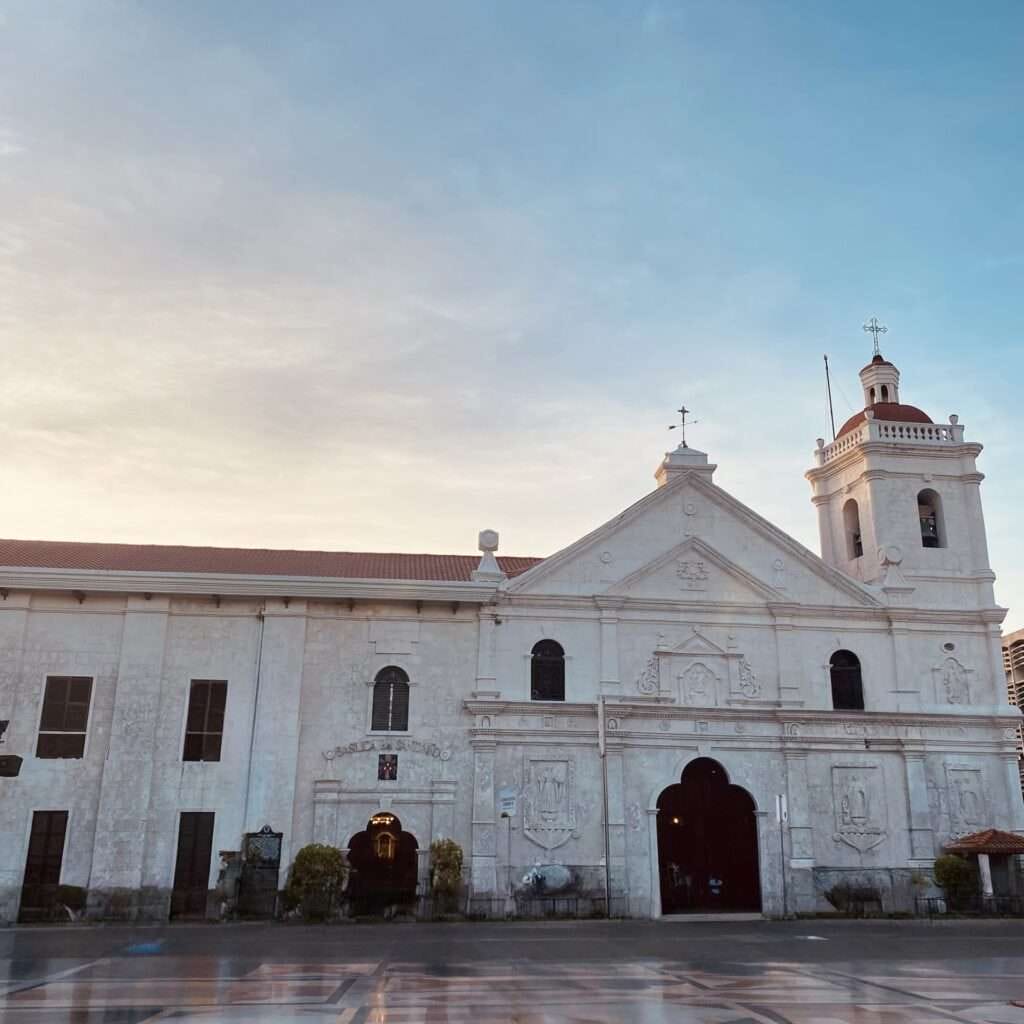
In 1565, Miguel Lopez de Legazpi renamed the Basilica Minore Del Santo Nino as San Agustin Church. This change occurred at the exact spot where Legazpi’s Spanish expedition discovered the revered Santo Niño image. Legend holds that the statue was a gift from Portuguese explorer Ferdinand Magellan to the Queen Juana of Cebu, the wife of Rajah Humabon, as a symbol of their allegiance after converting to Christianity over four decades earlier.
Found within a burned wooden box left behind during Magellan’s time, the Santo Niño statue miraculously survived the fire unscathed, believed to be a sign of divine protection. On April 28, 1565, coinciding with Legazpi’s arrival in Cebu, Augustinian priest Fr. Andres de Urdaneta established the Sto. Niño monastery. Fr. Diego de Herrera built the first church with only wood and nipa but was destroyed by fire. Unbelievable, the statue survived again.
In 1605, Fr. Pedro Torres build new wooden church, but was damaged by fire in 1628. On the same year, Fr. Juan Medina began building a third church that same year, using stone and brick. The construction was stopped because building materials were flawed, the bricks appeared to dissolve when exposed to air.
On February 29, 1735, Father Provincial Bergaño, Governor-General Fernando Valdes, Bishop Manuel Antonio Decio y Ocampo, and Juan de Albarran collaborated to reconstruct the current church using stones. Many individuals helped, including Fr. Antonio Lopez, the prior of San Nicolas, who was supported by the residents of his district. Additionally, the inhabitants of Talisay contributed four weeks of labor, while Fr. Francisco Aballe endeavored to aid with his parishioners from Mactan. The present church was finished in 1739. By 1965, Pope Paul VI converted the church into Basilica Minore.
Summary of the Church Construction
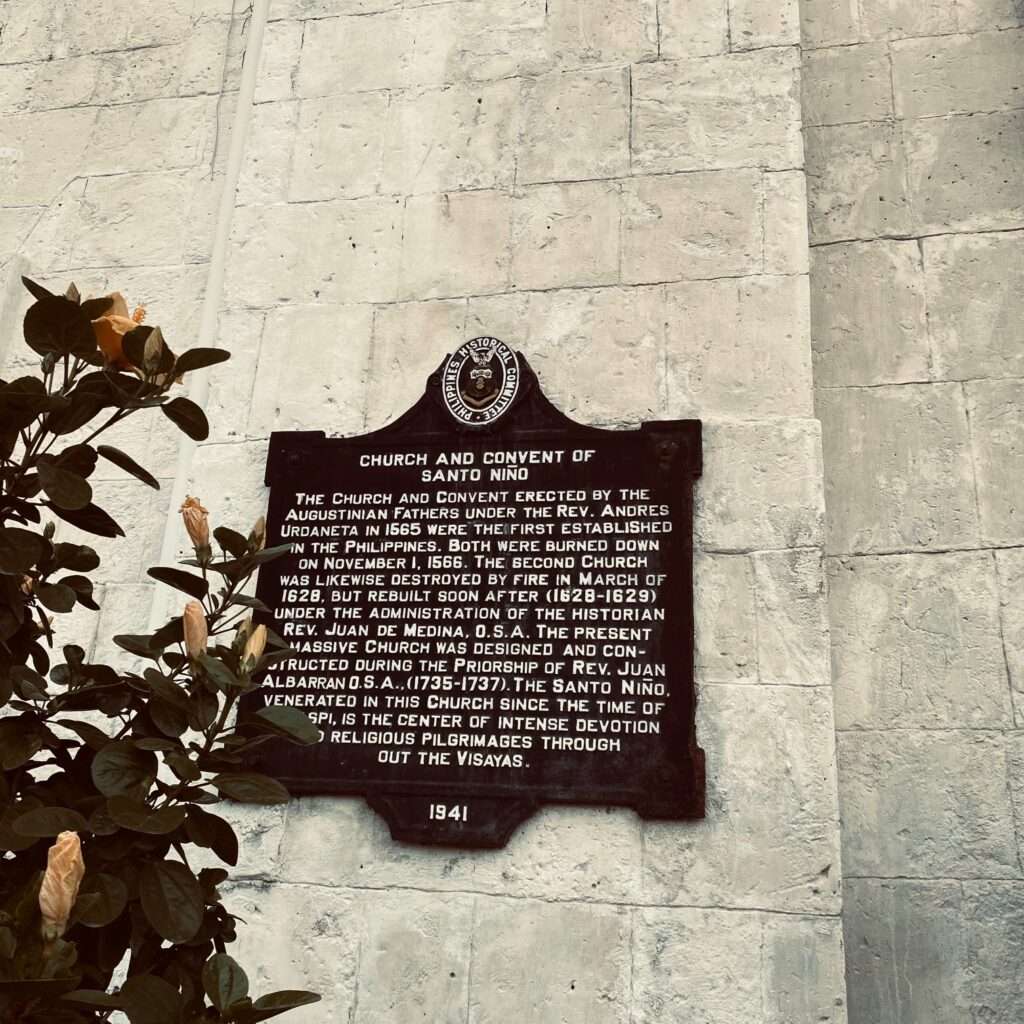
In 1566, the first church, constructed of wood and nipa, burned down at the site where the image of the Child Jesus was discovered.
In 1605, Fr. Pedro Torres rebuilt the church, but it was destroyed by fire in 1628.
In 1628, Fr. Juan Medina attempted stone and brick construction, but the bricks melted upon contact with air.
On February 29, 1735, Father Provincial Bergaño, Governor-General Fernando Valdes, Bishop Manuel Antonio Decio y Ocampo, and Juan de Albarran Prior of the Santo Niño began laying the foundation of the present church, using stone.
Residents of San Nicolas, Talisay, and Mactan also contributed to the construction efforts.
Design of the Church
Facade: The Basilica Minore del Santo Niño features a facade that combines elements of Muslim, Romanesque, and neo-classical styles. Preserved in its original stone texture and natural color, the facade exudes simplicity and elegance.
Bell Tower: The basilica’s bell tower serves as a complement to the adjacent convent. It has alternating blind and open windows, triangular pinnacles, and a bulbous dome with Muslim influences.

Center Section: The focal point of the basilica is its center section, characterized by an arched main entrance, rectangular corners, and a triangular pediment. This section highlights a harmonious blend of architectural features, creating a sense of balance and symmetry.
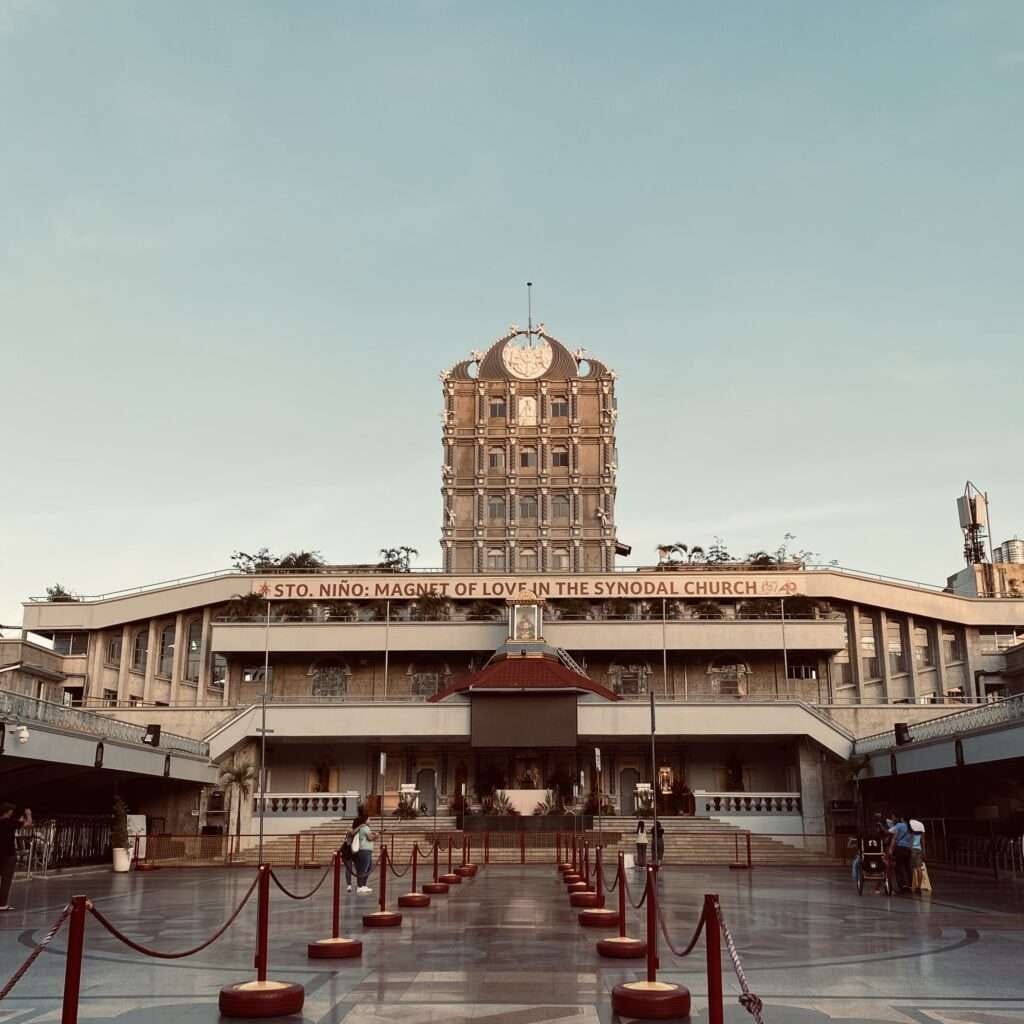
Foundation of the Church:
The Santo Niño de Cebu Church and Convent were established by Fr. Andres de Urdaneta on April 28, 1565, the day the Legazpi-Urdaneta expedition reached the island. Legaspi’s men designated a specific area for the church and convent of San Agustin on May 8 of the same year, where the Santo Niño image was discovered.
In 1599, the convent became a grammar school under Fr. Alonso de Mentrida. It also served as a refuge for missionaries, and a retirement home for the elderly and sick, typically cared for by a lay brother. The church has always been devoted to the Santo Niño and managed by the Augustinians, with a varying number of priests, typically three to five, and one or two lay brothers.
Discovery of the Santo Niño
Fr. Andres de Urdaneta, along with Miguel Lopez de Legazpi and four other Augustinians, sailed from Mexico to Samar in November 1564. After a three-month voyage, they reached Bohol and later Cebu, where they encountered Rajah Tupas. On Easter Sunday, April 22, 1565, they sailed to Cebu, finding an abandoned, burnt town. Inside a humble nipa house, a sailor discovered the Santo Niño statue, which had arrived with Magellan and was gifted to the Queen of Cebu when she converted to Christianity. The discovery reignited the Augustinians’ zeal for Christianizing the Philippines, leading to the spread of Santo Niño devotion across the islands.
Spread of Devotion
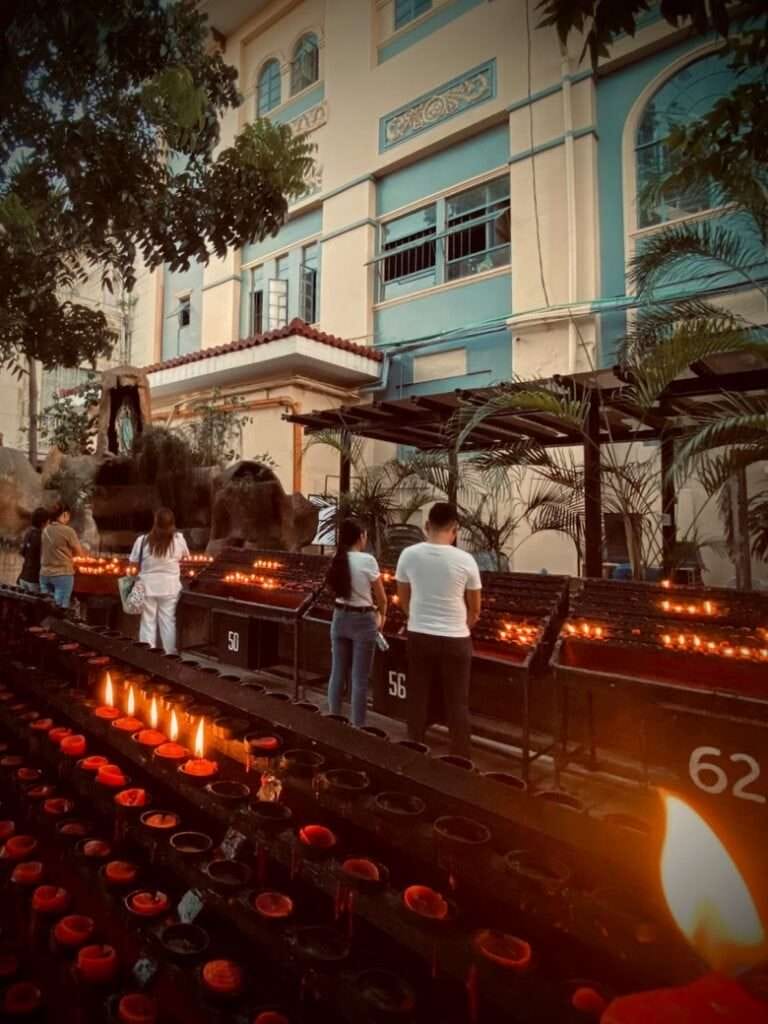
The devotion to the Santo Niño, or the Holy Child Jesus, permeated Filipino culture with remarkable speed, spreading fervently across different regions of the country. Each region embraced the devotion with its own unique customs and traditions, contributing to the rich tapestry of Filipino religious practices. In Cebu, the celebration of the Pit Senyor festival, which honors the Santo Niño, has become a cornerstone of the local culture, drawing thousands of devotees in a colorful display of faith and unity. Meanwhile, in Aklan, the Ati-atihan festival captures the hearts of participants and spectators alike, blending indigenous rituals with Catholic devotion in a vibrant celebration of faith and cultural heritage.
The Basilica del Santo Niño in Cebu stands as a testament to the enduring significance of the devotion, serving as a focal point for pilgrims from all corners of the Philippines and beyond. This sacred site not only holds religious importance but also serves as a symbol of Filipino identity and unity, reflecting the deeply ingrained faith that has shaped the nation’s history and socio-political landscape. As devotees flock to the basilica, they partake in rituals and prayers that have been passed down through generations, reaffirming their connection to the Santo Niño and to each other.
The spread of devotion to the Santo Niño represents more than just religious fervor; it symbolizes the resilience and strength of the Filipino spirit. Through periods of colonial rule, social upheaval, and economic challenges, the devotion to the Santo Niño has remained a steadfast source of comfort and inspiration for millions of Filipinos, guiding them through both triumphs and tribulations. As the nation continues to evolve, the devotion to the Santo Niño serves as a beacon of hope and a reminder of the enduring power of faith to unite and uplift communities.
Museum
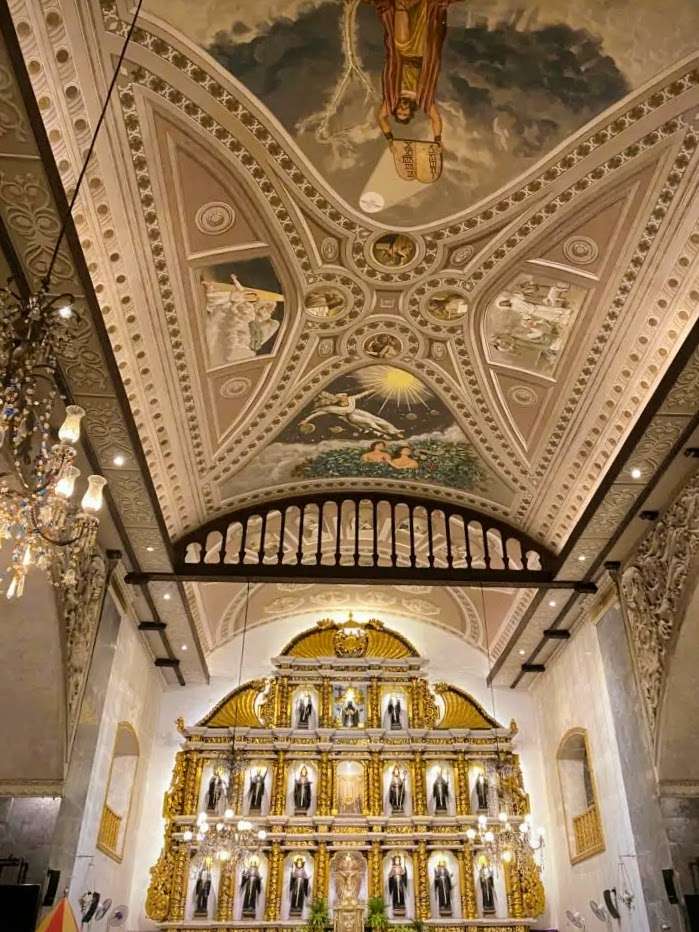
The Basilica Minore del Santo Niño in Cebu City, being one of the oldest roman catholic churches and most revered in the Philippines, is not only dedicated to the Santo Niño (Holy Child) but also houses various other saints and religious figures. Some of the saints commonly venerated in the basilica include:
Saint Joseph: As the earthly father of Jesus Christ and the husband of the Virgin Mary, Saint Joseph holds a special place in Christian devotion. His statues or images can often be found in churches dedicated to the Holy Family, such as the Basilica Minore del Santo Niño.
Saint Pedro Calungsod: A Filipino martyr and canonized saint, Saint Pedro Calungsod is often venerated in churches throughout the Philippines. He was a teenage catechist who, along with Spanish Jesuit missionary Blessed Diego Luis de San Vitores, was martyred in Guam in 1672 for their efforts to spread Christianity.
Saint Michael the Archangel: As one of the principal angels and the leader of the heavenly army, Saint Michael is a popular figure in Catholic tradition. His role as a protector and defender against evil often sees his images displayed prominently in churches, including the Basilica Minore del Santo Niño.
Various Other Saints and Angels: Additionally, the basilica may contain depictions or statues of other saints and angels, such as Saint Anthony of Padua, Saint Jude Thaddeus, Saint Francis of Assisi, and the archangels Gabriel and Raphael, among others. These figures play significant roles in Catholic devotion and are often reminded for intercession and protection. Visitors to the Basilica Minore del Santo Niño in Cebu City can encounter a rich array of religious iconography and symbolism, reflecting the diverse tapestry of saints and spiritual figures cherished within the Catholic tradition.
“Dagkotanan”
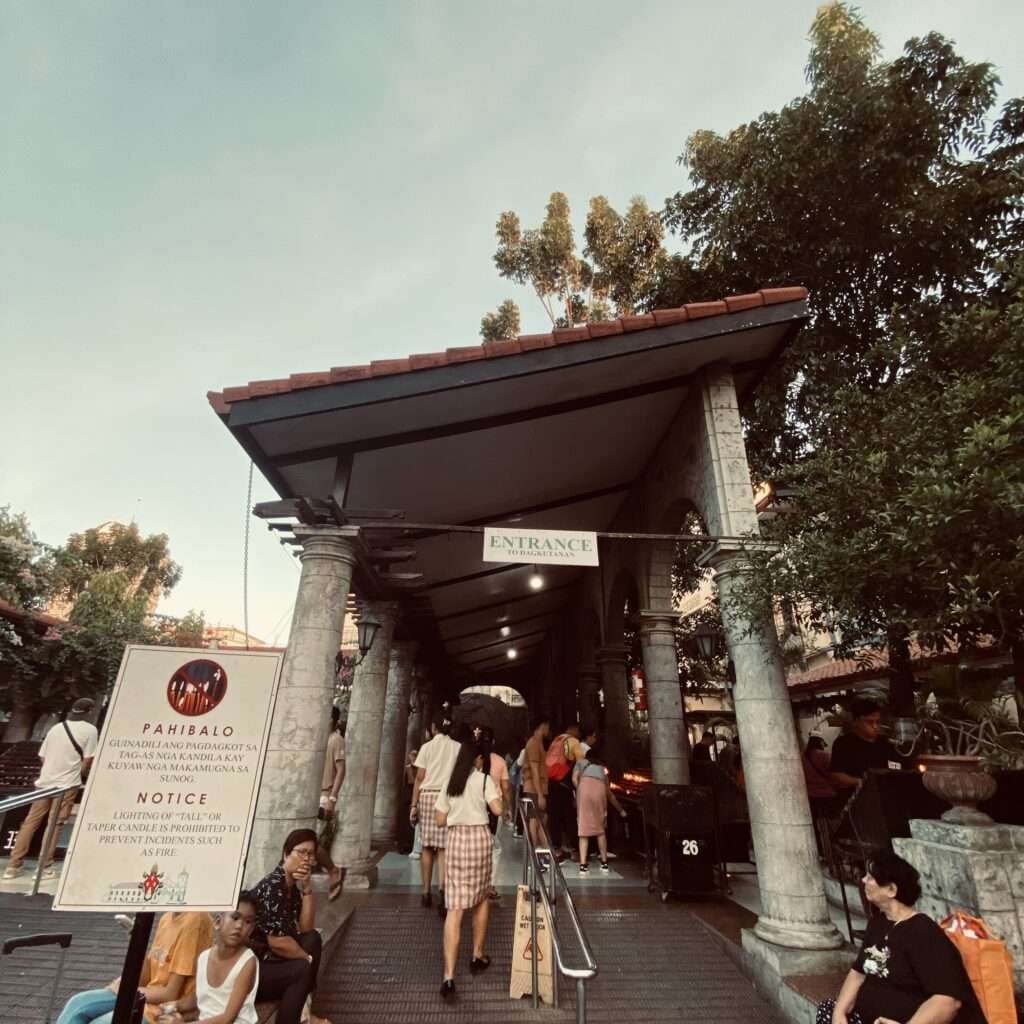
For those seeking a quieter space for personal prayers, there is a special area called “Dagkotanan” located to the right of the Pilgrim Center, facing the altar. Here, you can find red candles placed in metal boxes for your convenience. The process is simple: choose a red candle, light it, and pour your heart into your prayers.
The Candle Area, or Dagkotanan was constructed in 2015. Previously, it used to be inside the Basilica Church’s inner garden. However, after a fire incident caused by long candles, the Augustinian friars decided to move it to the basketball court between the Pilgrim Center and the Colegio del Nino building.
Sinulog Festival
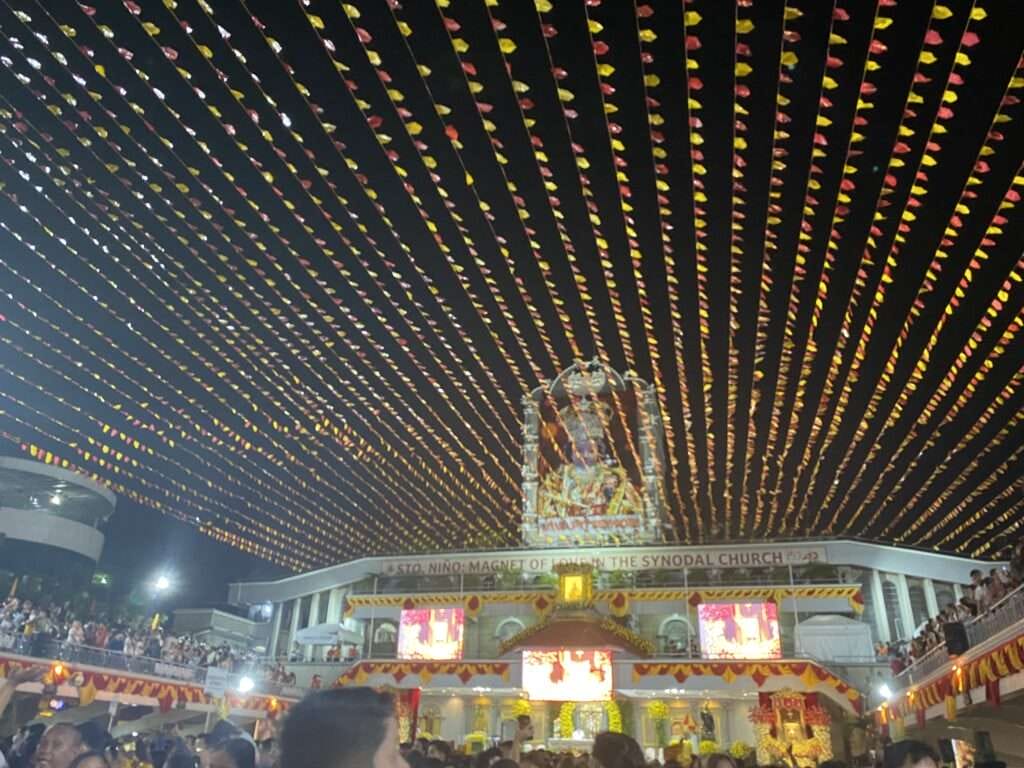
The Sinulog Festival is a lively celebration that happens every year on the third Sunday of January in Cebu City, Philippines. It’s a big event that honors the area’s cultural and religious history. The festival starts at Plaza Sugbo, where people gather to enjoy the fun and colorful activities.
The main part of the festival happens at the Minor Basilica of the Holy Child, also known as the Santo Niño Church. People from different towns come to join in the celebrations. Along the streets like Jakosalem Street and Osmena Boulevard, there are processions with people carrying images of the Santo Niño and saying prayers.
As the day goes on, the festival gets even more exciting with a big street parade. It goes through the city streets, including Burgos Street, with dancers wearing bright costumes and lively music. Even with all the excitement, places like Fort San Pedro add a touch of history and grandeur to the festivities. Inside the basilica, there are quiet areas with altars where people can pray and reflect. Throughout the Sinulog Festival, Cebu City is full of energy as locals and visitors come together to celebrate their traditions, faith, and community.
How to get to the Basilica Minore Del Santo Nino
The exact location of the Basilica Minore del Santo Niño is along Osmena Boulevard in Plaza Sugbo, Cebu city, Philippines, next to Magellan’s Cross and the city hall on Magallanes Street.
To reach the Basilica Minore del Santo Niño de Cebu, you can follow these simple directions:
By Air: If you are coming from another city or country, the quickest way to get to Cebu is by air. Arrive at the Mactan-Cebu International Airport, which serves both domestic and international flights.
From the Airport: Upon arriving at the airport, you have several options to reach the Basilica Santo Nino.
Airport Taxi: Yellow-colored taxis are readily available at the airport. You can hop into one and ask the driver to take you to Basilica Santo Niño. Make sure to confirm the fare before starting your journey, these kinds of taxi cost more than regular taxis.
Ride-Hailing Apps: Alternatively, you can use ride-hailing apps like Grab, which are popular in Cebu. Simply book a ride to the basilica through the app.
Public Transportation: If you prefer a more budget-friendly option, you can take a multicab or jeepney from the airport to downtown Cebu. From there, you can either walk or take another jeepney to reach the basilica.
Taxi/Grab: Hail a taxi or book a Grab ride to Basilica Santo Niño. Most drivers will know the location since it is a prominent landmark in the city. It cost 302-394 pesos.
Jeepney: If you are familiar with the jeepney routes, you can take one that passes by or near the basilica. Look for jeepneys bound for downtown Cebu or those labeled “Carbon” or “SM City” as they usually pass by the basilica.
Navigation: Once you are in the vicinity of the basilica, you can ask locals for directions if needed. It is a well-known national historic landmark, so most people in the area will be able to guide you.
Essential Visitor Tips for the Basilica Minore Del Santo Nino
1. Light a Candle: Lighting a candle is a common practice at the Basilica, symbolizing prayers, and intentions. Do not buy the long candles which are sold by the people around the historical place because security will not allow you to light them to avoid fire. There are free candles provided inside the church.
2. Dress Appropriately: As a place of worship, it is important to dress modestly and respectfully. Avoid wearing revealing clothing and opt for conservative attire such as shorts, sleeveless, mini-skirt, and crop-tops.
3. Respect Cultural Practices: Be mindful of the local customs and traditions observed at the basilica. Follow cues from other worshippers and participate in rituals with reverence.
4. Arrive Early: Basilica can get crowded, especially during peak times and religious festivals. Arriving early allows you to explore the site with more ease and avoid long lines. The best time to visit is 6:00am to 8:00am.
5. Secure Your Belongings: Keep your belongings always secure, especially valuables like wallets, phones, and cameras. Consider using a small bag or pouch that you can keep close to you.
5. Follow Photography Guidelines: While photography is often allowed, there may be restrictions in certain areas or during ongoing mass ceremony, respect any signage or instructions regarding photography and refrain from using flash if it could disrupt worshippers.
6. Silence Your Devices: Out of respect for the sanctity of the basilica, remember to silence your phone and avoid making loud noises or disruptions during prayers or ceremonies.
7. Attend Mass: If possible, attend a Mass at the basilica to experience the vibrant spirituality and community atmosphere. Check the schedule in advance to plan your visit accordingly.
8. Visit the Museum: Take some time to explore the museum within the basilica complex, which showcases artifacts and relics related to the Santo Niño and Cebu’s religious history.
9. Show Respect: Above all, show respect for the religious significance of the basilica and its surroundings. Be mindful of your behavior and interactions with others and approach your visit with humility and reverence.
| SUNDAYS & HOLY DAYS OF OBLIGATION | |||
| MORNING | AFTERNOON | ||
| 5:00 | CEBUANO | 12:30 | ENGLISH |
| 6:30 | CEBUANO | 2:00 | CEBUANO (LIVE ONLINE) |
| 8:00 | ENGLISH (LIVE ONLINE) | 3:30 | CEBUANO |
| 9:30 | ENGLISH (LIVE ONLINE) | 5:00 | ENGLISH |
| 11:00 | CEBUANO | 6:30 | ENGLISH |
| WEEKDAY MASSES | |||
| MORNING | AFTERNOON | ||
| 7:00 | CEBUANO | 12:30 | CEBUANO |
| 8:00 | ENGLISH (LIVE ONLINE) | 5:00 | ENGLISH |
